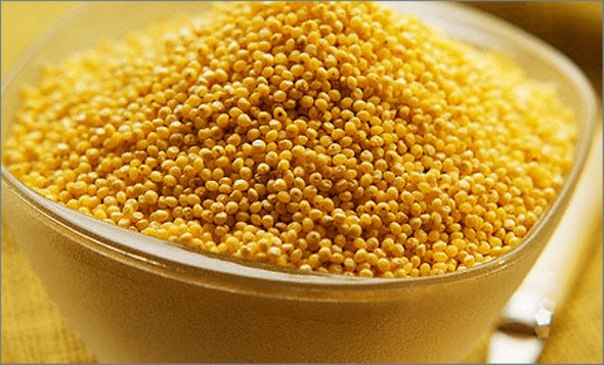Millet

 The name “millet” refers to several different but related grains from the grass family Poaceae. They look like tiny corn kernels and cost about a quarter of what you would pay for quinoa, making them among the more economical grains available. They are also naturally gluten-free. Like many whole grains, millet can be purchased as flour or flakes.
The name “millet” refers to several different but related grains from the grass family Poaceae. They look like tiny corn kernels and cost about a quarter of what you would pay for quinoa, making them among the more economical grains available. They are also naturally gluten-free. Like many whole grains, millet can be purchased as flour or flakes.
What Does It Taste Like?
Millet falls on the sweeter end of the whole grain scale; some people liken the flavor to corn. It also readily takes on the flavor characteristics of the ingredients in a sauce or a dressing. But the fluffy texture of cooked millet, similar to mashed potatoes or steamed rice, distinguishes it from other whole grains, such as chewy barely or buckwheat or farro. Similar to those whole grains, though, millet has a slightly nutty flavor, which toasting enhances.
How to Cook Millet
The indigestible hull gets removed during processing of millet intended for human consumption, so it cooks quickly and does not require overnight soaking. Millet has a reputation for being fussy to cook, but the easy-to-follow formula makes it possible to turn out a fluffy pot every time.
For a toothier whole grain preparation, use 2 cups of water for each cup of millet; for a softer, creamier result, increase the water to 3 cups. Bring it to a boil, then add salt and the millet, cover the pot, and turn the heat down. Keep a close eye on the pot as it simmers, checking the texture at 15 minutes if you plan to use it as a grain side dish such as pilaf. If it’s done, you can drain off any water the grains didn’t absorb or continue cooking for up to an additional five minutes. For a softer and creamier millet, such as with a breakfast porridge, simmer for an additional 10 minutes, stirring periodically.